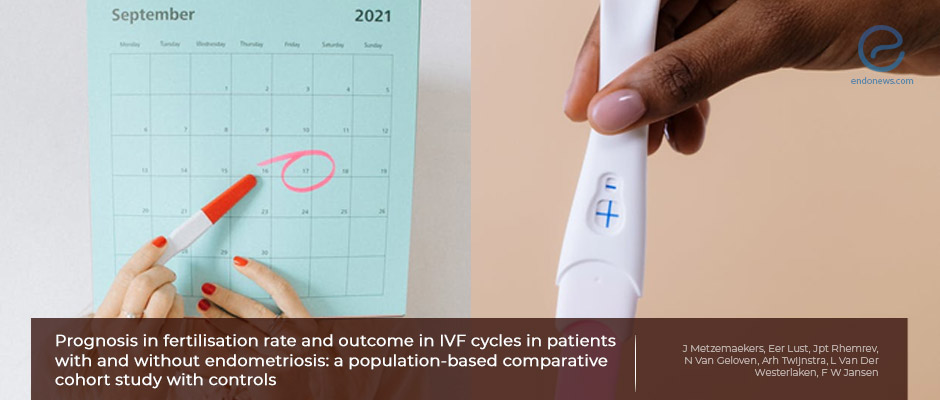Fertilization rate and pregnancy outcome in IVF cycles of endometriosis.
Apr 28, 2021
Same fertility outcomes at IVF for endometriotic women, compared to controls.
Key Points
Importance:
- Literature for the fertility rate of endometriotic women is conflicting, ranging from equal to reduced or even increased, when compared to controls.
Highlights:
- To increase the chance of success in IVF cycles of women with endometriosis, fresh oocyte and embryo usage is recommended.
- GnRH application before IVF cycles is important for endometriotic women who have oocyte failure.
What's done here:
- This is a population-based cohort study conducted by Leiden University Medical Center.
- A total of 503 IVF cycles, 191 of endometriotic women compared to 312 IVF cycles of nonendometriotic controls in 10 years research period.
Key results:
- The mean fertilization rate after IVF was similar between endometriosis and control groups, without any statistical difference.
- The endometriosis group had significantly lower oocyte retrieval compared to the control group, specifically over the age of 35.
- The single embryo transfer was almost the same but the double embryo transfer was low when compared to the control group.
- No statistical difference was found between the embryo morphology scores. Ongoing pregnancy rates were also same.
Lay Summary
Endometriosis affects the pelvic cavity, uterus, ovaries and causes impaired fertility as a result. The chronic inflammatory nature of this disease negatively impacts the oocyte quality, maturation, and fertilization. Obviously, fewer oocytes can be harvested in the IVF cycles of endometriotic women when compared to controls. Data in the literature for the fertilization rates of endometriotic women are confusing.
Prof. Jansen group from the Department of Gynecology, Leiden University, the Netherlands, studied IVF cycles of infertile endometriotic women to compare their fertilization rate with controls. Their interesting results appeared in the recently published paper in "Facts Views and Vision in Obstetric and Gynecology".
Data was collected from 503 IVF cycles, 191 belonged to endometriotic women. The women in the control group were diagnosed with tubal disease and unexplained infertility through their 312 IVF cycles. The primary outcome was fertility rate, which was measured by the presentation of 2 pronuclei after 16-20 hours of insemination. The secondary outcome included the number of retrieved oocytes, number of embryo transfers, embryo morphology score, biochemical pregnancy, and ongoing pregnancy with fetal heart rate.
The fertilization rate did not show any difference between the two groups, even after the age correction. However, the authors found a significantly lower number of retrieved oocytes in endometriotic patients compared to the controls, specifically in the group of >35years-old.
Other parameters, including the number of embryo transfers, embryo morphology scores, and ongoing pregnancy rates were similar between the two groups. Notably, patients with endometriosis had more often a positive pregnancy test compared to the other group.
Based on these results, the authors concluded that endometriosis patients with an IVF indication can be counselled positively regarding the chances of becoming pregnant without the need of a different IVF approach.
Research Source: https://pubmed.ncbi.nlm.nih.gov/33889858/
fertilization rate infertility IVF insemination retrived oocytes embryo transfers embryo morphology tubal infertility unexplained infertility endometriosis.

